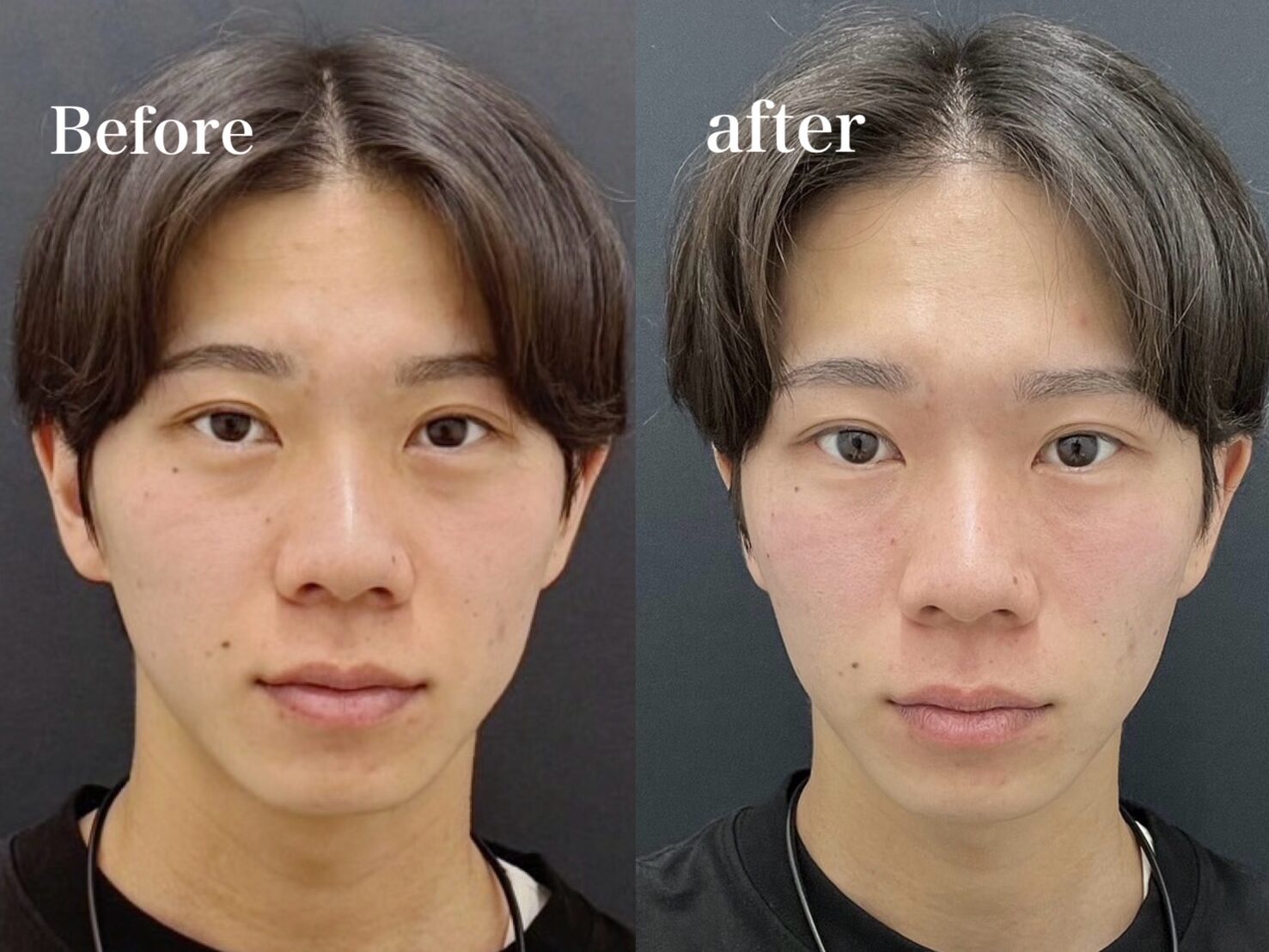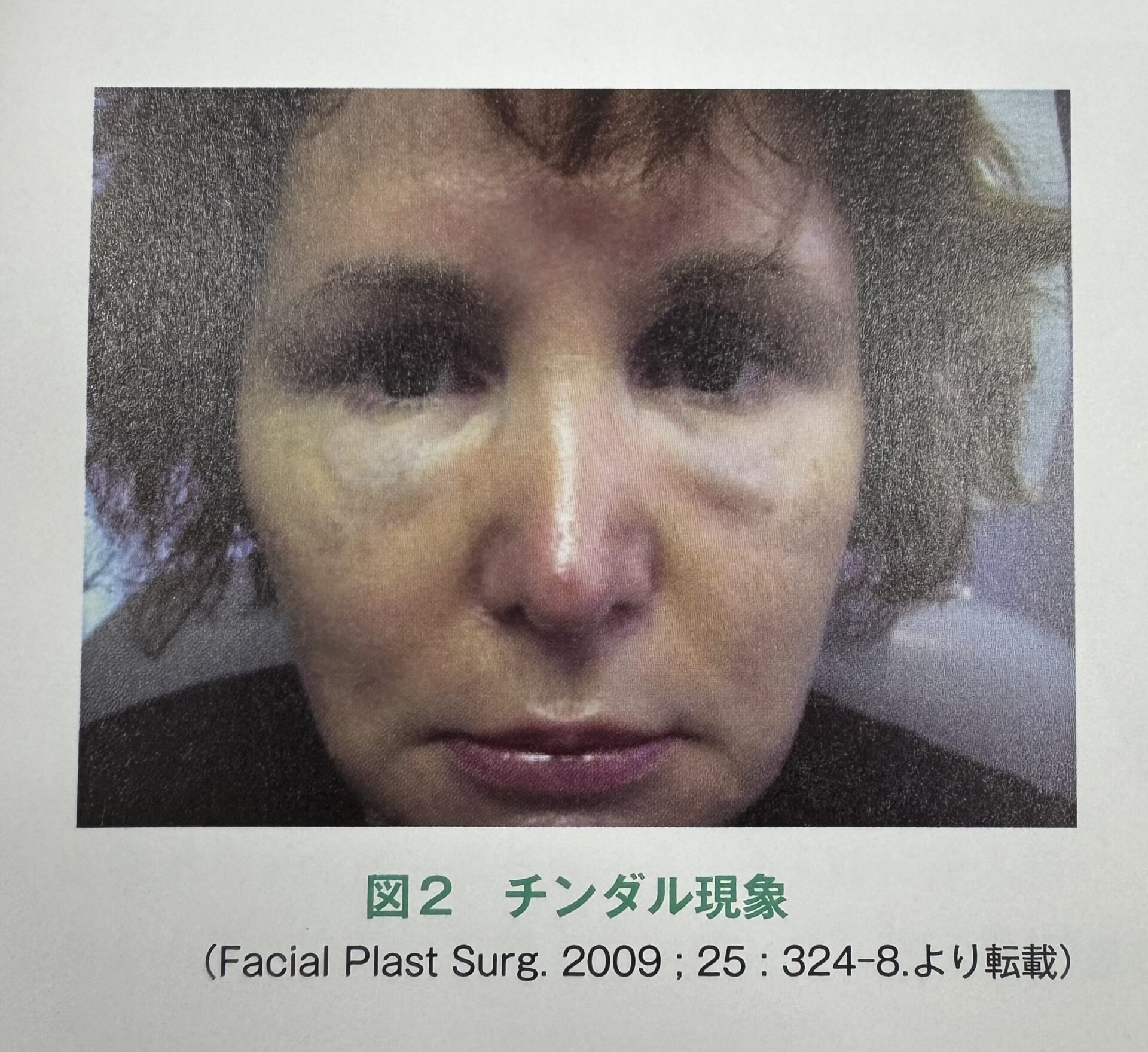The Charm of Hyaluronic Acid for Promoting Rejuvenation of the Eye Area
The Effects of Hyaluronic Acid for Rejuvenating the Eye Area
Hyaluronic acid has a remarkable ability to improve the appearance of the eyes.
When aiming to enhance the impression of the eye area, the injection points typically include the temples, upper eyelid, lower eyelid, and cheekbones.
For the temples, injecting firmer hyaluronic acid into the T1 and T2 points of the MD codes helps pull the upper eyelid upwards and outward, improving sagging.
For the upper eyelid, hyaluronic acid is injected to correct hollows. These areas are prone to indentation, so a softer product, such as Volbella, is used. Even if the hollow is noticeable when the eyes are open, it tends to lessen when the eyes are closed. The amount to inject is best determined through discussion with the doctor, depending on the specific condition.
Injecting into the lower eyelid directly addresses dark circles. I use a technique called micro-aliport, which involves injecting small amounts and using a cannula from an entry point on the cheek to the lower orbital rim under the eye.
When improving dark circles, simply inflating the dark circle area may only reduce the shadow without achieving significant improvement. For people with sunken cheekbones, lifting from the cheek area results in a more natural and beautiful design.
Causes of Dark Circles Under the Eyes and the Necessity of Hyaluronic Acid Treatment
There are several causes of dark circles: the protrusion of orbital fat, sunken areas under the eyes, or the thin skin under the eyes that makes the underlying muscles visible, causing a dark appearance.
Hyaluronic acid is great at filling in hollows, making it ideal for people with sunken under-eye areas.
For people with protruding orbital fat, it is difficult to improve dark circles with hyaluronic acid, especially if the dark circles worsen when laughing.
For those whose dark circles become less prominent when smiling, hyaluronic acid can help improve the condition to some degree.
By placing more hyaluronic acid on the outer corner of the eyes and lifting while filling the shadows, it can improve the appearance, though it may not fully eliminate them.
For those with thin skin under the eyes, overuse of hyaluronic acid may lead to a phenomenon called the "Tyndall effect," where the hyaluronic acid appears bluish or translucent. It’s important to be cautious and avoid over-injection.
For this skin type, injecting into areas with thicker skin helps create a fuller appearance and improves the overall look.
Improvement of Sagging with Injection and Its Effects
The bones around the eyes (orbital bones) shrink with age, and the space in the eye socket expands.
By injecting to supplement this bone loss, a natural rejuvenation can occur.
When addressing sagging under the eyes, the most effective approach is injecting into the outer corner. In the MD codes, this corresponds to Tt2.
By injecting about 0.2 to 0.25cc into this area, the skin is lifted outward, improving sagging.
Procedure and Flow of Hyaluronic Acid Injection
Key Points to Know Before the Procedure
First, it’s important to understand whether your dark circles can be improved by hyaluronic acid injections.
For those whose dark circles worsen when they laugh, please understand that there may be limitations to how much improvement can be achieved.
Additionally, since the skin under the eyes is thin, there’s a higher risk of the "Tyndall effect," where hyaluronic acid becomes visible as a bluish tint.
Be aware that there’s a limit to the amount that can be injected to avoid this effect.
Once you understand these points, hyaluronic acid treatment is a relatively easy and recommended procedure.
The Importance of Choosing a Clinic and Access
There are both "surgical treatments" and "injection treatments" for dark circles, and each clinic has its own strengths and weaknesses.
To make a well-informed decision, it’s likely necessary to visit multiple clinics to understand the benefits and limitations of both types of treatment.
Our clinic specializes in hyaluronic acid treatments, and consultations are free, so feel free to come in and ask about hyaluronic acid injections.
For surgical treatments, we only have textbook-level knowledge, so please use it for reference.
Injection Pain and Anesthesia Options
Since hyaluronic acid itself contains anesthetic properties, the pain is generally mild.
However, having the area around the eyes touched may cause some discomfort.
If you're nervous, it’s a good idea to use laughing gas (nitrous oxide) for additional relaxation.
Case Studies of Hyaluronic Acid Treatment for Dark Circles Under the Eyes

Rejuvenating the eye area with hyaluronic acid.
Hyaluronic acid was used to improve hollow-type dark circles. One syringe of Volbella was injected under the eyes, and one syringe of Voluma was injected further below.
Learning from Mistakes: Safe Treatment
The Tyndall effect image comes from "Hyaluronic Acid Injection Therapy from Anatomy" (by Dr. Tokura Furuyama).
Over-injecting hyaluronic acid under the eyes can lead to a bluish or translucent appearance, as seen in this photo.
Since the skin under the eyes is thin, this phenomenon is more likely to occur.
To prevent the Tyndall effect, it’s essential to accurately assess the injection layers and quantities.
Consult with your doctor carefully and avoid over-injection.

Types of Hyaluronic Acid and Their Characteristics
Comparison of Main Hyaluronic Acid Products
For the temples and cheeks, Voluma is often used as it helps create height and volume.
For those who cannot use Juvederm products, RHA4 is a good alternative.
For the upper eyelids, Volbella or Volite is recommended because they are very soft and prevent lumpiness.
For under the eyes, Volbella or RHA1 is used.
Over the past few years, I’ve used 1cc of Volbella or RHA1 under the eyes, and I’m very satisfied with the results as they provide a smooth finish without the Tyndall effect or lumps.
Effect Differences by Injection Area
When injecting under the eyes, I consider how much to inject into the inner corner, center, and outer corner.
A typical approach is 0.1cc for the inner corner, 0.2cc for the center, and 0.2cc for the outer corner, totaling 1cc for both sides.
Injecting into the outer corner helps lift the skin under the eyes and improves sagging, while injecting into the lower eyelid adds height to the skin. The inner corner should be done more conservatively.
This approach works for most cases without causing unnatural results.
Using the micro-aliport technique allows for more precise control over the injection amount.
Most of the injection is done at the deeper layers (periosteal), but finishing with a small amount subcutaneously results in a very smooth finish.
Recommended Products by a Specialist
As a specialist in hyaluronic acid, I highly recommend the Juvederm Volux series.
The advantage of the Volux series is that the results are close to the final look right after injection.
Some hyaluronic acid products can absorb water after injection and swell, but the Volux series has minimal swelling, so it rarely becomes lumpy several hours after injection.
Price and Cost of Hyaluronic Acid Injections
Average Price per Treatment
It’s difficult to provide an exact price without a consultation to assess your condition and decide on the type and amount of hyaluronic acid, but generally:
RHA1 (1cc) costs about 45,000 yen, and Voluma (3cc) with Volbella (2cc) can be around 300,000 yen.
The average cost is about 120,000 yen for 1cc of Voluma and 1cc of Volbella.
Yoshiko Kuno
